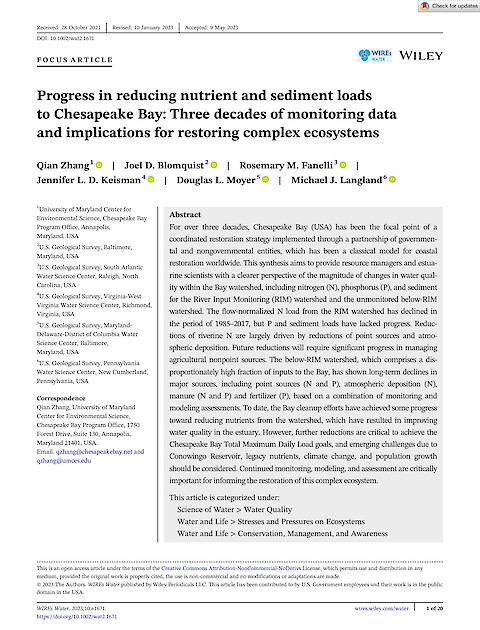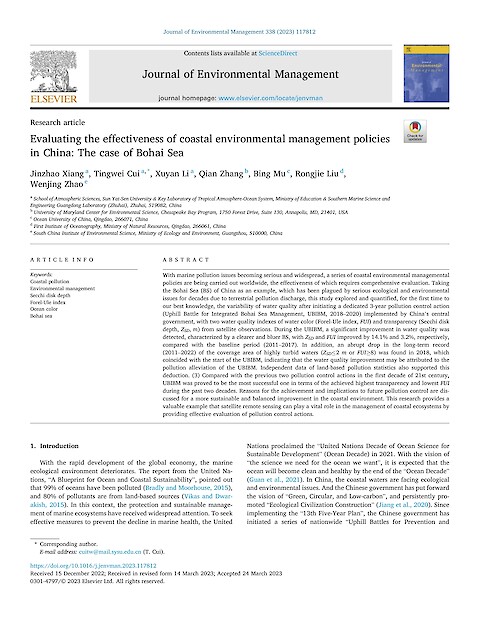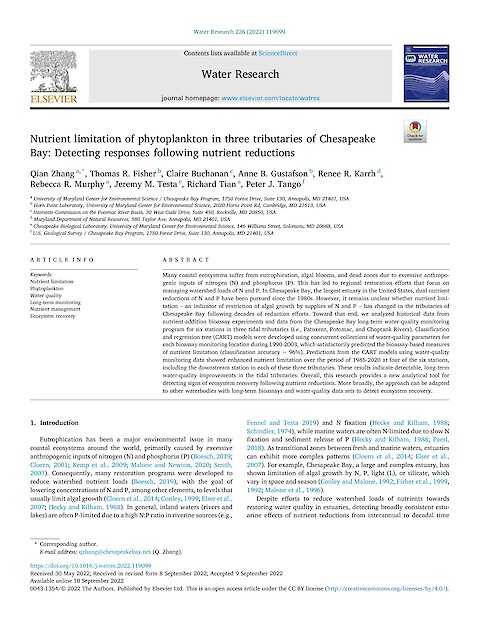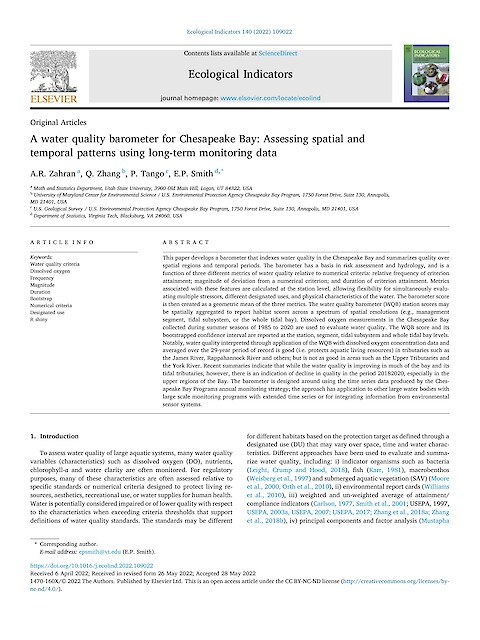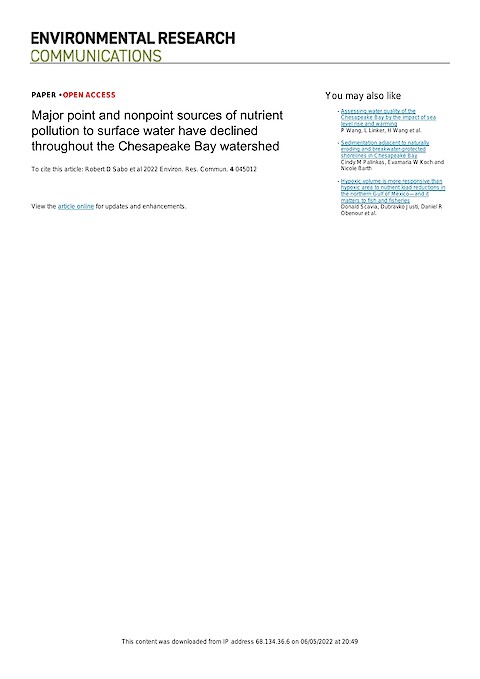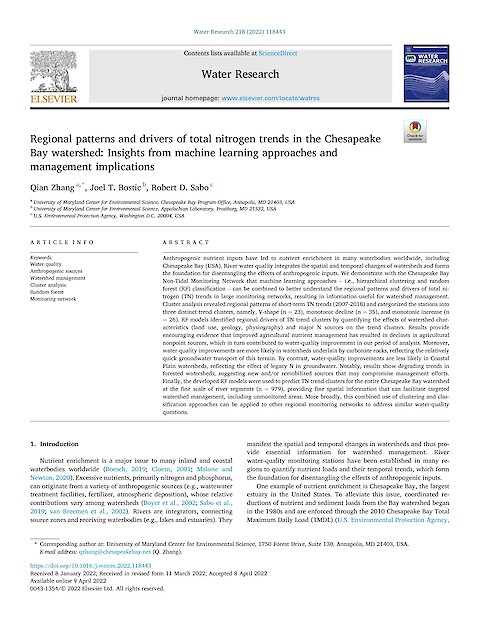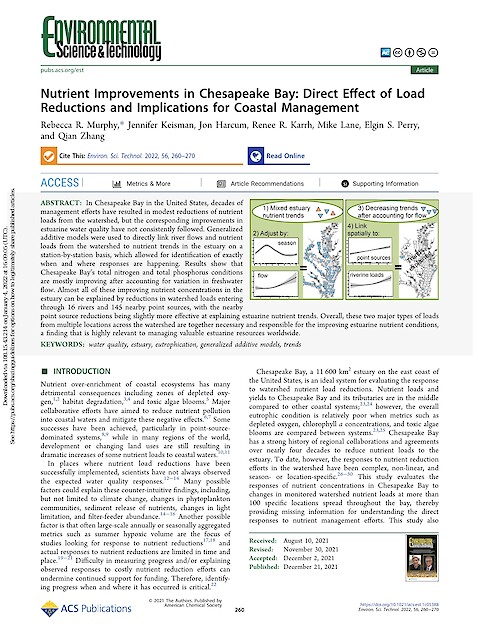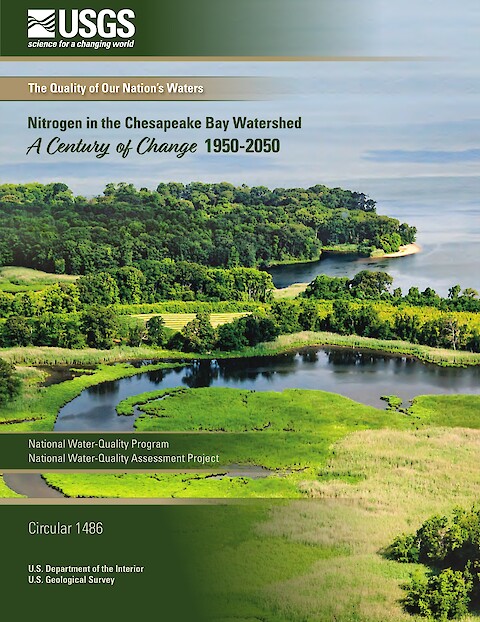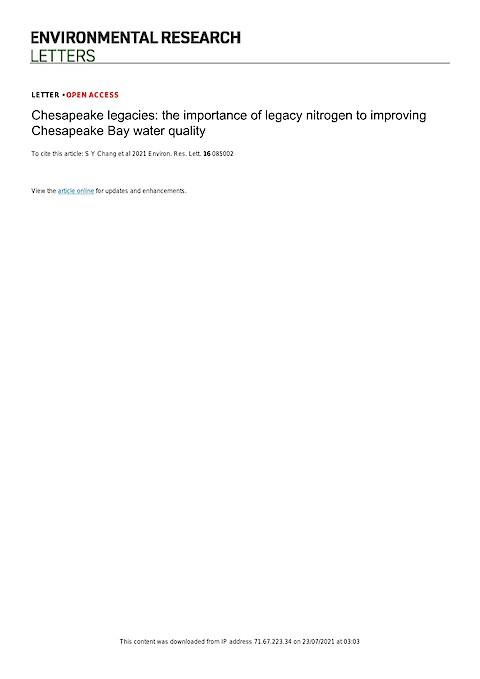Nitrogen in the Chesapeake Bay watershed: A century of change, 1950–2050
Clune JW, Capel PD, Miller MP, Burns DA, Sekellick AJ, Claggett PR, Coupe RH, Fanelli RM, Garcia AM, Raffensperger JP, Terziotti S, Bhatt G, Blomquist JD, Hopkins KG, Keisman JL, Linker, LC Shenk GW, Smith, RA, Soroka AM, Webber JS, Wolock DM, Zhang Q ·
10 November 2021
Nitrogen, a critical element in all forms of life, is continuously being passed from nonliving to living matter and then back again, but an excess of this nutrient can have adverse effects on aquatic environments. An understanding of the past, present, and future sources, movement, and fate of nitrogen in the Chesapeake Bay watershed can help inform efforts to bring this cycle back into balance (fig. OV.1).
Read more


